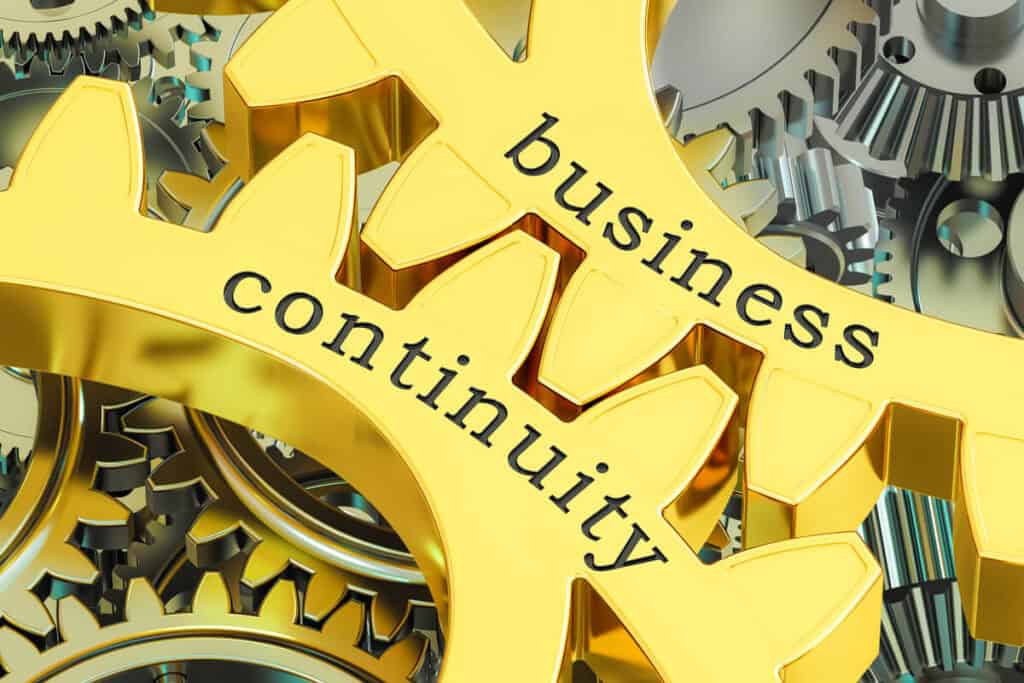Key Highlights
- Every Business continuity KPI plays a vital role in measuring and tracking the effectiveness of business continuity plans.
- Recovery Time Objective (RTO) and Recovery Point Objective (RPO) are two essential KPIs in business continuity planning.
- Business Impact Analysis (BIA) helps identify critical business functions and assess their potential impacts during disruptions.
- Evaluating crisis management effectiveness is crucial for continuous improvement in business continuity planning.
- Employee training and awareness are important KPIs in ensuring a resilient organization during disruptions.
- Selecting the right KPIs for your business involves aligning them with your business objectives.
Table of Contents
Toggle
Introduction
There is an old saying that if you can’t measure something then you can’t improve it. This is particularly the case for business continuity. Using a set of Key Performance Indicators (KPIs) is essential for success with this important discipline. The challenge is selecting which individual business continuity KPI or set of KPIs is appropriate for your own organization. In this blog I’ll give you some ideas about which to consider, helping you on your journey to world class business continuity.

What is a business continuity KPI?
Before looking at what a business continuity KPI is, let’s first understand the concept and importance of both Business Continuity (BC) and Key Performance Indicators, the difference between KPIs and metrics, and how they can help with your business continuity initiative.

What is business continuity?
Let’s start by checking your understanding of what business continuity (BC) is. If you’re confident you already know enough about it, then skip the rest of this section. BC involves creating and testing plans to give you operational resilience during disruptive events, such as natural disasters like floods and fires, technology events including cyberattacks and IT failures, and human events such as sickness and malicious acts.
What is a KPI?
A KPI is a particular kind of metric. A Metric is a system for measuring something. For example, in an automobile the speedometer provides a metric that shows how fast you are going at a point in time. A key performance indicator provides much more, it is a measure that is used to track progress towards achieving a particular goal or objective.
Using our automobile example, for a delivery driver a KPI could measure how frequently you arrive on time. The thing to focus on are the words “Key”, “performance”, and “indicator”. KPIs help businesses set goals (targets), monitor goal achievement (milestones), identify areas for improvement, and track progress over time. Each business continuity KPI will measure the effectiveness of your BC plans against your objectives.

What are examples of metrics for business continuity?
There are two important metrics that are fundamental to BC, RTO and RPO:

What is a Recovery Time Objective?
The Recovery Time Objective (RTO) measures the maximum acceptable time during a disruption before an organization’s critical operations are impacted. It represents the time it takes to recover and restore essential functions, services, and systems to normal operation after an incident occurs. Monitoring RTO is crucial because it ensures timely recovery, minimizing the impact of disruptions on business operations.

What is a Recovery Point Objective?
The Recovery Point Objective (RPO) is another crucial metric in business continuity planning. It determines the maximum amount of data loss that an organization can tolerate during a disruption. RPO defines the point in time to which data must be recovered to resume normal operations without significant consequences. Monitoring RPO is essential for organizations to ensure that their backup and recovery processes are aligned with their data loss tolerance levels.
What are examples of business continuity KPI?
There are several examples of a business continuity KPI that successful organizations use to track how they are progressing with BC:
BC Plan progress
Metrics only tell part of the story. Tracking the progress of creating a robust business continuity plan is an important business continuity KPI. At very least you should be tracking percentage completion by business function for:
- Business impact analysis (BIA)
- BC plan creation
- BC plan updates
- BC tests and exercises
- Improvement action implementation
These individual items can be rolled up into a single KPI, for example by taking the statistical mean of the individual percentages.
Example table to track progress on creating business continuity plans:
|
Business function |
Plan creation started? |
Estimated plan completion |
Plan under review? |
Plan accepted? |
|
Sales |
Yes |
80% |
No |
No |
|
Customer service |
Yes |
100% |
Yes |
No |
|
IT |
No |
0% |
No |
No |
|
HR |
Yes |
100% |
No |
Yes |

BC Plan quality
Tracking progress is just part of the story. Your ability to survive disruption depends on the quality of your BC plans and their implementation. A KPI to measure the quality of your plans will help to avoid the situation where your plans look good on paper, but fail to protect your business when the inevitable disruption strikes.
For this important KPI, score each BC plan on a scale of 1-10 using criteria based on your own situation and experience from others. Criteria can include:
- Plan completeness KPI
- Issues found during plan testing
- Unmitigated risks
- Meeting RTO and RPO
- Training completion
- Employee BC awareness
- Successful plan invocations for real events

BC maturity and resilience
The maturity and resilience of your BC processes and approach can be measured using industry standards such as ISO 22301 as the basis. This includes evaluating a number of core factors against the needs of the organization and best practice for BC. Using business continuity KPI such as this will take you into the next league, and help to ensure that your BC program is sustained.

Business Impact Analysis
Business Impact Analysis is a crucial activity in business continuity planning. It identifies critical business functions and assesses the potential impact on them during disruptions. BIA evaluates financial, operational, reputational, and regulatory consequences to prioritize resources and recovery efforts effectively. It’s a good idea to have a KPI that measures the quality of your BIA activities.
Crisis management audits
Auditing and measuring the effectiveness of crisis management strategies is essential for continuous improvement in business continuity planning. This business continuity KPI evaluates how well an organization responds to a crisis by testing and assessing its crisis response plans, communication strategies, decision-making processes, and coordination efforts.
Scoring employee training and preparedness
Employees play a crucial role in maintaining a resilient organization during disruptions. A KPI for employee training and awareness can check that employees are prepared and capable of responding effectively to disruptions, evaluating the effectiveness of employee training programs, understanding of roles and responsibilities during disruptions, and overall awareness of business continuity practices.
Selecting the right business continuity dashboard for your organisation
Selecting the most appropriate KPIs for your organization is an important activity. It involves identifying metrics that align with your organization’s specific situation and goals. Here are some guidelines to consider when selecting KPIs:
- Align with business objectives: Choose KPIs that directly contribute to your organization’s overall goals and objectives. Ensure that they reflect the critical aspects of your business operations and measure what matters most.
- Consider industry and organizational needs: Take into account the unique characteristics of your industry and organization. Different sectors may have specific compliance requirements or distinct risks, so adapt your KPI selection accordingly.
- Involve stakeholders: Engage key stakeholders, including senior management, department heads, and subject matter experts, in the process of identifying KPIs. Their input can provide valuable insights into the specific areas that need to be measured for effective business continuity planning.
How can you each business continuity KPI with business objectives?
Aligning KPIs with business objectives will ensure that they accurately measure and reflect the success of your business continuity efforts. Here are some key points to consider:
- Identify critical business functions: Determine the key areas of your business that are most vital to its success and sustainability. These functions should be the focus of your KPIs, as they have the most significant impact on overall business performance.
- Define measurable goals: Define specific, measurable goals for each critical business function. These goals should be aligned with your overall business objectives and reflect the desired outcomes for each function.
- Select relevant KPIs: Choose KPIs that accurately measure the progress and success of each critical business function, to provide meaningful and actionable insights into the performance of your BC efforts.
Implementing business continuity KPIs
Implementing each business continuity KPI requires careful planning and execution. It includes identifying the most relevant metrics, establishing methods and tools for tracking and measuring them, and integrating them into business continuity plans. Here are some key steps to consider when implementing a business continuity KPI:
- Identifying relevant KPIs: Select the most relevant KPIs that align with your business objectives and reflect the critical aspects of your business operations.
- Establishing data collection methods: Decide how you will collect data related to each KPI. This could involve manual data entry, automated monitoring systems, or integration with existing software solutions.
- Regular review and analysis: Establish a schedule for reviewing and analyzing the collected data regularly. This allows you to identify trends, patterns, or areas of improvement in your business continuity efforts.
Tools and methods for tracking business continuity KPIs
Effective tracking will help you gain valuable insights into the performance of your BC program. This involves using tools and methods that provide visibility into the relevant metrics, facilitating data-driven decision-making. Here are some examples:
|
Tool/Method |
Description |
|
Dashboard |
Visual representation of KPIs for real-time visibility |
|
Data collection methods |
Manual entry, automated monitoring systems, integration |
|
Monitoring tools |
Technology tools for tracking KPIs |
Integrating business continuity KPIs into business continuity plans
Integrating each business continuity KPI into business continuity plans is essential for aligning performance metrics with recovery efforts. By integrating KPIs, organizations can ensure that their business continuity plans are focused on the most critical aspects of their operations. Here are some key points to consider when integrating KPIs into business continuity plans:
- Define KPI targets: Set specific targets for each KPI that align with your organization’s objectives and desired outcomes.
- Incorporate KPI tracking: Include a section in your business continuity plans for tracking and monitoring KPIs. This ensures that KPIs are integrated into the overall recovery efforts.
- Align recovery strategies: Align your recovery strategies with the KPI targets to ensure that they contribute to the achievement of those targets.
Conclusion
Carefully select and manage Key Performance Indicators for Business Continuity to enhance your organization’s resilience. Understanding metrics like Recovery Time Objective (RTO), Recovery Point Objective (RPO), and Crisis Management Effectiveness is crucial for readiness. Align KPIs with business goals, use monitoring tools, and conduct regular assessments to strengthen your continuity plan. Employee education plays a vital role in achieving KPI objectives. Monitor and adjust KPIs based on performance data to improve your ability to handle disruptions effectively. Organizations like the Business Continuity Institute, a global membership association for BC professionals, can help you on your journey.





